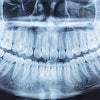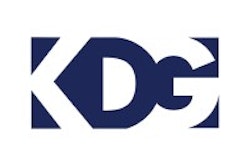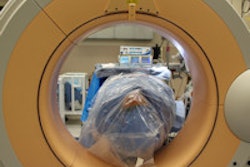What kind of scanner should you use to plan complex implants? In a shoot-out between multislice computed tomography (MSCT) and small-field cone-beam CT (CBCT), both imaging modalities lived to see another day.
Using a head from a human cadaver, researchers compared the results of both techniques to physical measurements. The result? The researchers wrote in the April issue of Oral Surgery, Oral Medicine, Oral Pathology, Oral Radiology, and Endodontology (Vol. 105:4, pp. 512-518) that they could find no statistical difference in the two types of imaging; both came within a millimeter of the measurements taken with a caliper.
The results are "a good thing for dentistry," says Gary Orentlicher, D.M.D., chief of oral and maxillofacial surgery at White Plains Hospital Center in White Plains, N.Y. "From an accuracy standpoint, cone-beam is an excellent technology, and I think this article is basically just saying that. If you have an in-office cone-beam machine, it's a very accurate image that you're going to get."
The researchers, from the Katholieke Universiteit Leuven in Leuven, Belgium, fastened the formalin-fixed human head on a wooden stand so that they could scan it in either an upright position for the CBCT system or supine for the MSCT scanner.
They glued small gutta-percha markers to the soft tissues on the top and both facial and palatal sides of the alveolar ridge to define a set of reproducible linear measurements.
The accuracies of the linear measurements using an Accuitomo 3D CBCT (J. Morita, Kyoto, Japan) and two MSCTs (four-slice Somatom VolumeZoom and 16-slice Somatom Sensation 16; Siemens Healthcare, Erlangen, Germany) are shown in the table. Measurements from two observers of the images were compared to those obtained from three observers using calipers, which were considered the gold standard.
Accuracy of linear bone measurements by different imaging protocols
|
||||||||||||||||||
So does this study mean that CBCT and MSCT are equally useful? As the researchers wrote, their study only focused in on bone measurements. If you're choosing which type of scanner to use, there are other considerations. For example, they wrote, the small field-of-view of CBCT could pose problems if you need to visualize a full jaw. On the other hand, the CBCT's image quality would be good for identifying an intraosseous anatomic landmark such as the mandibular or nasopalatine canal.
Other advantages of CBCT are its lower radiation dose, shorter acquisition time, and reduced costs, the authors wrote, as well as in-office imaging. Disadvantages are scatter radiation, limited dynamic range of the x-ray area detectors, truncated view artifact, and artifacts caused by beam hardening. MSCT gives sharper pictures, but at the expense of more radiation, higher cost, longer acquisition time, and the need to send patients out to an imaging center. Both modalities produce 3D images.
The study doesn't completely settle the question of which system offers better measurements, the investigators wrote, because the study was limited by the small distances that could be measured and the small number of measurements.
While agreeing with these limitations, Dr. Orentlicher believes the two modalities truly are equal when it comes to accuracy of measurements. "If the implant surgeon is really interested in just viewing the anatomy of the area," he says, "meaning being able to measure the widths of the bone, being able to see the proximity of nerves, vessels, sinus, to the site that he's planning on placing an implant, then a cone-beam scan or [an MS] CT scan will be of equal value."
One of the limitations with CBCT, he noted, may be a lack of clarity because of the use of a lower radiation dose. Therefore, it may not reveal the definitive anatomy of upper jaws with soft bone or a less dense cortical plate as would medical-grade MSCT. But both CBCT and MSCT are "far, far superior than just taking a panorex or a standard dental periapical as far as the information that the doctor is going to get."
In this study, both four- and 16-slice scanners were evaluated, as well as CBCT. Dr. Orentlicher says the choice of four- or 16-slice scanner here may not be as critical as in actual practice since the cadaveric maxillary specimen was fixed to a stationary mount whereas live patients' heads may tend to move more. He advised that the CBCT results of the present investigation apply to the Accuitomo scanners tested and that other studies have shown variability in results from other makes and models. Dr. Orentlicher estimates that there are probably 10 to 12 other CBCTs currently on the market.
He says that 3D imaging may not yet be the standard of care for the way implant dentistry is practiced today. But in his own practice, he says over the past four years 28% of his cases and 52% of implants are placed "guided," meaning using 3D radiographic imaging, software for planning, and computer generated surgical guides. "The cases (in which) I'm using 3D implant planning technologies are more of the cases that have anatomic issues or (where) I'm placing multiple implants," he said.
Dr. Orentlicher reported speaking and/or consulting relationships with Nobel Biocare, Materialise, and Keystone Dental. He is also a partner in Facial Imaging, LLC, a dental image analysis company.



















